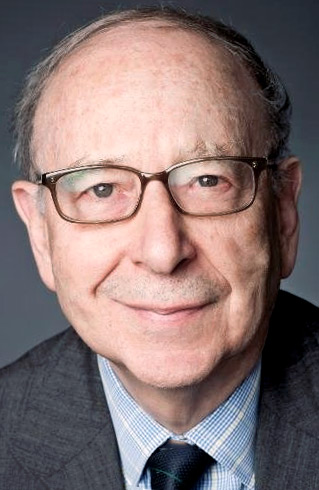

 The Uniform Domain Name Dispute Resolution Policy (UDRP) is not an exclusive remedy for cybersquatting, but it is by far the preferred forum. Direct actions in courts of competent jurisdiction, the Anticybersquatting Consumer Protection Act (ACPA) in the U.S. are minimal in comparison, and it is rare for respondents to remove disputes to a court of competent jurisdiction before a UDRP decision (paragraph 4(k) of the Policy). Less rare (but not copious) are post-UDRP challenges under the ACPA. more
The Uniform Domain Name Dispute Resolution Policy (UDRP) is not an exclusive remedy for cybersquatting, but it is by far the preferred forum. Direct actions in courts of competent jurisdiction, the Anticybersquatting Consumer Protection Act (ACPA) in the U.S. are minimal in comparison, and it is rare for respondents to remove disputes to a court of competent jurisdiction before a UDRP decision (paragraph 4(k) of the Policy). Less rare (but not copious) are post-UDRP challenges under the ACPA. more
 UDRP complainants prevail in the range of 85% to 90% which approximately correlates with the percentage that respondents default in responding to complaints. The annual number of complaints administered by ICANN providers has been hovering around 4,000 +. Astonishingly, the number has remained steady for a good number of years despite the phenomenal increase... Compared to the whole, there are a relatively small number of contested disputes, perhaps in the annual range of 400 to 500, and of those a larger percentage are called out as cybersquatters. more
UDRP complainants prevail in the range of 85% to 90% which approximately correlates with the percentage that respondents default in responding to complaints. The annual number of complaints administered by ICANN providers has been hovering around 4,000 +. Astonishingly, the number has remained steady for a good number of years despite the phenomenal increase... Compared to the whole, there are a relatively small number of contested disputes, perhaps in the annual range of 400 to 500, and of those a larger percentage are called out as cybersquatters. more
 Cyberflight (defined as strategically transferring accused domain names to another registrar or registrant upon receipt of a complaint) was a sufficient irritant by 2013 for the ICANN to adopt recommendations to amend the Rules of the Uniform Domain Name Dispute Resolution Policy (UDRP). Effective July 1, 2015 the Rules now include a requirement for locking the domain as well as a change in the timing of transmitting the complaint to respondents. Before the amendment there had been no uniform approach to locking. more
Cyberflight (defined as strategically transferring accused domain names to another registrar or registrant upon receipt of a complaint) was a sufficient irritant by 2013 for the ICANN to adopt recommendations to amend the Rules of the Uniform Domain Name Dispute Resolution Policy (UDRP). Effective July 1, 2015 the Rules now include a requirement for locking the domain as well as a change in the timing of transmitting the complaint to respondents. Before the amendment there had been no uniform approach to locking. more
 During the recent ICANN Board meeting in Mexico City, the Board authorized the creation and funding of an Implementation Recommendation Team (IRT). This team was to be comprised of "an internationally diverse group of persons with knowledge, expertise, and experience in the fields of trademark, consumer protection, or competition law, and the interplay of trademarks and the domain name system to develop and propose solutions to the overarching issue of trademark protection in connection with the introduction of new gTLDs." more
During the recent ICANN Board meeting in Mexico City, the Board authorized the creation and funding of an Implementation Recommendation Team (IRT). This team was to be comprised of "an internationally diverse group of persons with knowledge, expertise, and experience in the fields of trademark, consumer protection, or competition law, and the interplay of trademarks and the domain name system to develop and propose solutions to the overarching issue of trademark protection in connection with the introduction of new gTLDs." more
 Domain brand squatting can be defined as the unauthorized or dishonest use of a brand or company identifiers in domain names. It is often linked to the use of look-alike domains in bad faith, and we see it all the time. The threat actors behind these domains are called different names, though a prevalent one would be “typosquatters.” The Hot on the Trail of Compulsive Brand Squatters webinar showcased how these people are infiltrating the Internet. The first page of PhishTank’s valid phish search alone as of this writing tells us that domain brand squatting is a real and present danger. more
Domain brand squatting can be defined as the unauthorized or dishonest use of a brand or company identifiers in domain names. It is often linked to the use of look-alike domains in bad faith, and we see it all the time. The threat actors behind these domains are called different names, though a prevalent one would be “typosquatters.” The Hot on the Trail of Compulsive Brand Squatters webinar showcased how these people are infiltrating the Internet. The first page of PhishTank’s valid phish search alone as of this writing tells us that domain brand squatting is a real and present danger. more
 Chanel's warning to counterfeiters: "we are watching and we are taking action." That's the literal message you will see when visiting around 40 websites that used to sell counterfeit goods (such as mychanelshop.com) that now redirect to the Chanel-owned website chanelreplica.com. These domains were transferred to Chanel as a result of a favorable decision rendered in May 2010 against two counterfeiters. more
Chanel's warning to counterfeiters: "we are watching and we are taking action." That's the literal message you will see when visiting around 40 websites that used to sell counterfeit goods (such as mychanelshop.com) that now redirect to the Chanel-owned website chanelreplica.com. These domains were transferred to Chanel as a result of a favorable decision rendered in May 2010 against two counterfeiters. more
Nominet, the company responsible for operating Britain's .UK top-level domain, on Tuesday, released its 2018 annual summary of domain name disputes based on its Dispute Resolution Service (DRS), which the company says allows .UK disputes to be settled quickly. more
 The post reconsiders a cooperative solution to cybersquatting that I proposed in 2007. I also draw on examples of success and failure of legal actions to protect intellectual property (IP) licensing. Cybersquatting has gone unabated with the new gTLDs despite the introduction of new protection instruments such as the Trademark Cleaning House (TMCH) database and the availability of Uniform Rapid Suspension (URS) services, as well as declarations by registries of their intentions to block unauthorized registrations. more
The post reconsiders a cooperative solution to cybersquatting that I proposed in 2007. I also draw on examples of success and failure of legal actions to protect intellectual property (IP) licensing. Cybersquatting has gone unabated with the new gTLDs despite the introduction of new protection instruments such as the Trademark Cleaning House (TMCH) database and the availability of Uniform Rapid Suspension (URS) services, as well as declarations by registries of their intentions to block unauthorized registrations. more
 The World Intellectual Property Organization put out a release yesterday trumpeting an eight percent increase in domain name disputes handled by WIPO. In 2008 there were 2329 complaints filed with WIPO, the most ever. WIPO uses the increase to raise questions about the possible increase in the number of available generic top-level domains... more
The World Intellectual Property Organization put out a release yesterday trumpeting an eight percent increase in domain name disputes handled by WIPO. In 2008 there were 2329 complaints filed with WIPO, the most ever. WIPO uses the increase to raise questions about the possible increase in the number of available generic top-level domains... more
 Defendant Shui registered the domain name citybank.org and established a site there promoting financial services, sometimes using the mark CITIBANK. The real Citibank, armed with its trademark registrations in over 200 countries and over 50 years of use of its CITIBANK mark, filed suit against Shui under the Anticybersquatting and Consumer Protection Act, 15 USC 1125(d) ("ACPA")... Citibank sought $100,000 -- the maximum amount of statutory damages available under the ACPA, plus payment of Citibank's attorneys' fees... more
Defendant Shui registered the domain name citybank.org and established a site there promoting financial services, sometimes using the mark CITIBANK. The real Citibank, armed with its trademark registrations in over 200 countries and over 50 years of use of its CITIBANK mark, filed suit against Shui under the Anticybersquatting and Consumer Protection Act, 15 USC 1125(d) ("ACPA")... Citibank sought $100,000 -- the maximum amount of statutory damages available under the ACPA, plus payment of Citibank's attorneys' fees... more
 With 2019 coming to a close, we're not just saying goodbye to the past 365 days, we're also saying goodbye to an entire decade. As we bid farewell to the 2010s, we're taking this opportunity to look back and reflect on the digital decade as well as consider what the future might have in store for us all. The past ten years were a whirlwind of change, with new advances in technology exploding onto the market at a faster pace than ever before. more
With 2019 coming to a close, we're not just saying goodbye to the past 365 days, we're also saying goodbye to an entire decade. As we bid farewell to the 2010s, we're taking this opportunity to look back and reflect on the digital decade as well as consider what the future might have in store for us all. The past ten years were a whirlwind of change, with new advances in technology exploding onto the market at a faster pace than ever before. more
 We're in an interregnum where society has paused, and there's no telling how things may turn. In such times of crisis, we are the explorer; exploring the uncharted waters of change, where dangers and opportunities lie. How the pandemic caused this greater societal change may not be something that an individual can alter, we may, however, take the helm and navigate. more
We're in an interregnum where society has paused, and there's no telling how things may turn. In such times of crisis, we are the explorer; exploring the uncharted waters of change, where dangers and opportunities lie. How the pandemic caused this greater societal change may not be something that an individual can alter, we may, however, take the helm and navigate. more
 In Blogs devoted to news from the domain name industry and domainers, there is great glee in reporting about overreaching trademark owners. The reason for the glee, I think, is that it's a form of collective sigh from domainers and the domain industry that the UDRP is working as it should, which means that Panels are careful in their assessments of parties' rights. more
In Blogs devoted to news from the domain name industry and domainers, there is great glee in reporting about overreaching trademark owners. The reason for the glee, I think, is that it's a form of collective sigh from domainers and the domain industry that the UDRP is working as it should, which means that Panels are careful in their assessments of parties' rights. more
 As ICANN introduces new generic top level domains (gTLDs) and separates itself from US oversight, it has the opportunity to distance itself from the taint of cybersquatting, brand abuse, and criminal activity involving domains... To underscore the scope of the issue, consider this research on just 30 top Interbrand-ranked global brands. The most recent MarkMonitor Brandjacking Index found cybersquatting incidents increased over 40% in the last year for the brands that were studied; these leading brands suffered as many as 15,000 incidents per brand... more
As ICANN introduces new generic top level domains (gTLDs) and separates itself from US oversight, it has the opportunity to distance itself from the taint of cybersquatting, brand abuse, and criminal activity involving domains... To underscore the scope of the issue, consider this research on just 30 top Interbrand-ranked global brands. The most recent MarkMonitor Brandjacking Index found cybersquatting incidents increased over 40% in the last year for the brands that were studied; these leading brands suffered as many as 15,000 incidents per brand... more
 In my recent CircleID post, DNS, Domain Names, and Certificates: The Missing Links in Most Cybersecurity Risk Postures, I highlighted the importance of applying multiple layers of defense to secure these business-critical assets. Last Friday, Brian Krebs, the world-renowned cybersecurity journalist, reiterated the criticality of domain name security because the domain name "e-hawk.net" was stolen from the rightful owner using social engineering tactics targeting its domain name registrar. more
In my recent CircleID post, DNS, Domain Names, and Certificates: The Missing Links in Most Cybersecurity Risk Postures, I highlighted the importance of applying multiple layers of defense to secure these business-critical assets. Last Friday, Brian Krebs, the world-renowned cybersecurity journalist, reiterated the criticality of domain name security because the domain name "e-hawk.net" was stolen from the rightful owner using social engineering tactics targeting its domain name registrar. more